new posts in all blogs
Viewing: Blog Posts Tagged with: 2017 Caldecott contenders, Most Recent at Top [Help]
Results 1 - 5 of 5
How to use this Page
You are viewing the most recent posts tagged with the words: 2017 Caldecott contenders in the JacketFlap blog reader. What is a tag? Think of a tag as a keyword or category label. Tags can both help you find posts on JacketFlap.com as well as provide an easy way for you to "remember" and classify posts for later recall. Try adding a tag yourself by clicking "Add a tag" below a post's header. Scroll down through the list of Recent Posts in the left column and click on a post title that sounds interesting. You can view all posts from a specific blog by clicking the Blog name in the right column, or you can click a 'More Posts from this Blog' link in any individual post.

By:
Betsy Bird,
on 11/17/2016
Blog:
A Fuse #8 Production
(
Login to Add to MyJacketFlap)
JacketFlap tags:
middle grade graphic novels,
Best Books of 2016,
2016 reviews,
Reviews 2016,
2017 Caldecott contenders,
2016 graphic novels,
2016 middle grade graphic novels,
Reviews,
graphic novels,
Matt Phelan,
Best Books,
Candlewick,
Add a tag
 Snow White: A Graphic Novel
Snow White: A Graphic Novel
By Matt Phelan
Candlewick Press
$19.99
ISBN: 978-0-7636-7233-1
Ages 9-12
On shelves now
I’d have said it couldn’t be done. The Snow White fairytale has been told and retold and overdone to death until there’s not much left to do but forget about it entirely. Not that every graphic novel out there has to be based on an original idea. And not that the world is fed up with fairytales now (it isn’t). But when I heard about Matt Phelan’s Snow White: A Graphic Novel I was willing to give it a chance simply because I trusted its creator and not its material. The crazy thing is that even before I picked it up, it threw me for a loop. I heard that the story was recast in 1920s/ early-1930s Depression-era New York City. For longer than I’d care to admit I just sort of sat there, wracking my brain and trying desperately to remember anything I’d ever seen that was similar. I’ve seen fairytales set during the Depression before, but never Snow White. Then I picked the book up and was struck immediately by how beautiful it was. Finally I read through it and almost every element clicked into place like the gears of a clock. I know Matt Phelan has won a Scott O’Dell Award for The Storm in the Barn and I know his books get far and wide acclaim. Forget all that. This book is his piece de resistance. A bit of fairytale telling, to lure in the kids, and a whole whopping dollop of cinematic noir, deft storytelling, and clever creation, all set against a white, wintery backdrop.
The hardened detective thinks he’s seen it all, but that was before he encountered the corpse in the window of a department store, laid out like she was sleeping. No one could account for her. No one except maybe the boy keeping watch from across the street. When the detective asks for the story he doesn’t get what he wants, but we, the readers, do. Back in time we zip to when a little girl lost her mother to illness and later her father fell desperately in love with a dancer widely proclaimed to be the “Queen of the Follies.” Sent away to a boarding school, the girl returns years later when her father has died and his will leaves all his money in a trust to Snow. Blinded by rage, the stepmother (who is not innocent in her husband’s death) calls in a favor with a former stagehand to do away with her pretty impediment, but he can’t do the deed. What follows is a gripping tale of the seven street kids that take Snow under their wing (or is it the other way around?), some stage make-up, a syringe, an apple, and an ending so sweet you could have gotten it out of a fairytale.
 Let’s get back to this notion I have that the idea of setting Snow White during the Depression in New York is original. It honestly goes above and beyond the era. I could swear I’d never read or seen a version where the seven dwarfs were seven street kids. Or where the evil stepmother was a star of the Ziegfeld Follies. Snow’s run from Mr. Hunt is through Central Park through various shantytowns and he presents the stepmother with a pig’s heart procured at a butcher. Even making her glass coffin a window at Macy’s, or the magic mirror an insidious ticker tape, feels original and perfectly in keeping with the setting. You begin to wonder how no one else has ever thought to do this before.
Let’s get back to this notion I have that the idea of setting Snow White during the Depression in New York is original. It honestly goes above and beyond the era. I could swear I’d never read or seen a version where the seven dwarfs were seven street kids. Or where the evil stepmother was a star of the Ziegfeld Follies. Snow’s run from Mr. Hunt is through Central Park through various shantytowns and he presents the stepmother with a pig’s heart procured at a butcher. Even making her glass coffin a window at Macy’s, or the magic mirror an insidious ticker tape, feels original and perfectly in keeping with the setting. You begin to wonder how no one else has ever thought to do this before.
You’d also be forgiven for reading the book, walking away, giving it a year, and then remembering it as wordless. It isn’t, but Phelan’s choosy with his wordplay this time. Always a fan of silent sequences, I was struck by the times we do see words. Whether it’s the instructions on the ticker tape (a case could easily be made that these instructions are entirely in the increasingly deranged step-mother’s mind), Snow’s speech about how snow beautifies everything, or the moment when each one of the boys tells her his name, Phelan’s judiciousness makes the book powerful time and time again. Can you imagine what it would have felt like if there had been an omniscient narrator? The skin on the back of my neck shudders at the thought.
For all that the words are few and far between, you often get a very good sense of the characters anyway. Snow’s a little bit Maria Von Trapp and a little bit Mary Poppins to the boys. I would have liked Phelan to give her a bit more agency than, say, Disney did. For example, when her step-mother informs her, after the reading of her father’s will, that her old room is no longer her own, I initially misread Snow’s response to be that she was going out to find a new home on her own. Instead, she’s just going for a walk and gets tracked down by Mr. Hunt in the process. It felt like a missed beat, but not something that sinks the ship. Contrast that with the evil stepmother. Without ever being graphic about it, not even once, this lady just exudes sex. It’s kind of hard to explain. There’s that moment when the old stagehand remembers when he once turned his own body into a step stool so that she could make her grand entrance during a show. There’s also her first entrance in the Follies, fully clothed but so luscious you can understand why Snow’s father would fall for her. The book toys with the notion that the man is bewitched rather than acting of his own accord, but it never gives you an answer to that question one way or another.
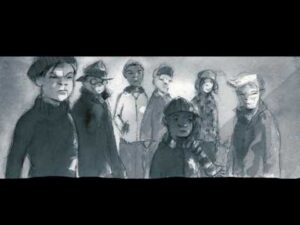 Lest we forget, the city itself is also a character. Having lived in NYC for eleven years, I’ve always been very touchy about how it’s portrayed in books for kids. When contemporary books are filled with alleyways it makes me mighty suspicious. Old timey fare gets a pass, though. Clever too of Phelan to set the book during the winter months. As Snow says at one point, “snow covers everything and makes the entire world beautiful . . . This city is beautiful, too. It has its own magic.” So we get Art Deco interiors, and snow covered city tops seen out of huge plate glass windows. We get theaters full of gilt and splendor and the poverty of Hoovervilles in the park, burning trashcans and all. It felt good. It felt right. It felt authentic. I could live there again.
Lest we forget, the city itself is also a character. Having lived in NYC for eleven years, I’ve always been very touchy about how it’s portrayed in books for kids. When contemporary books are filled with alleyways it makes me mighty suspicious. Old timey fare gets a pass, though. Clever too of Phelan to set the book during the winter months. As Snow says at one point, “snow covers everything and makes the entire world beautiful . . . This city is beautiful, too. It has its own magic.” So we get Art Deco interiors, and snow covered city tops seen out of huge plate glass windows. We get theaters full of gilt and splendor and the poverty of Hoovervilles in the park, burning trashcans and all. It felt good. It felt right. It felt authentic. I could live there again.
We live in a blessed time for graphic novels. With the recent win of what may well be the first graphic novel to win a National Book Award, they are respected, flourishing, and widely read. Yet for all that, the graphic novels written for children are not always particularly beautiful to the eye. Aesthetics take time. A beautiful comic is also a lot more time consuming than one done freehand in Photoshop. All the more true if that comic has been done almost entirely in watercolors as Phelan has here. I don’t think that there’s a soul alive who could pick up this book and not find it beautiful. What’s interesting is how Phelan balances the Art Deco motifs with the noir-ish scenes and shots. When we think of noir graphic novels we tend to think of those intensely violent and very adult classics like Sin City. Middle grade noir is almost unheard of at this point. Here, the noir is in the tone and feel of the story. It’s far more than just the black and white images, though those help too in their way.
 The limited color palette, similar in many ways to The Storm in the Barn with how it uses color, here invokes the movies of the past. He always has a reason, that Matt Phelan. His judicious use of color is sparing and soaked with meaning. The drops of blood, often referred to in the original fairytale as having sprung from the queen’s finger when she pricked herself while sewing, is re-imagined as drops of bright red blood on a handkerchief and the pure white snow, a sure sign of influenza. Red can be lips or an apple or cheeks in the cold. Phelan draws scenes in blue or brown or black and white to indicate when you’re watching a memory or a different moment in time, and it’s very effective and easy to follow. And then there’s the last scene, done entirely in warm, gentle, full-color watercolors. It does the heart good to see.
The limited color palette, similar in many ways to The Storm in the Barn with how it uses color, here invokes the movies of the past. He always has a reason, that Matt Phelan. His judicious use of color is sparing and soaked with meaning. The drops of blood, often referred to in the original fairytale as having sprung from the queen’s finger when she pricked herself while sewing, is re-imagined as drops of bright red blood on a handkerchief and the pure white snow, a sure sign of influenza. Red can be lips or an apple or cheeks in the cold. Phelan draws scenes in blue or brown or black and white to indicate when you’re watching a memory or a different moment in time, and it’s very effective and easy to follow. And then there’s the last scene, done entirely in warm, gentle, full-color watercolors. It does the heart good to see.
The thing about Matt Phelan is that he rarely does the same story twice. About the only thing you can count on with him is that he loves history and the past. Indeed, between showing off a young Buster Keaton ( Bluffton) and a ravaged Dust Bowl setting (The Storm in the Barn) it’s possible “Snow White” is just an extension of his favorite era. As much a paean to movies as it is fairytales and graphic novels, Phelan limits his word count and pulls off a tale with truly striking visuals and killer emotional resonance. I don’t think I’ve ever actually enjoyed the story of Snow White until now. Hand this book to graphic novel fans, fairytale fans, and any kid who’s keen on good triumphing over evil. There might be one or two such children out there. This book is for them.
On shelves now.


By:
Betsy Bird,
on 9/20/2016
Blog:
A Fuse #8 Production
(
Login to Add to MyJacketFlap)
JacketFlap tags:
Reviews,
picture books,
Chronicle,
Best Books,
Brendan Wenzel,
picture book readalouds,
Best Books of 2016,
2016 picture books,
2016 reviews,
Reviews 2016,
2017 Caldecott contenders,
2016 picture book readalouds,
Add a tag
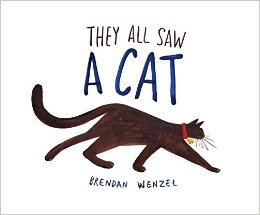 They All Saw a Cat
They All Saw a Cat
By Brendan Wenzel
Chronicle Books
$16.99
ISBN: 978-1-4521-5013-0
Ages 4-7
On shelves now
It’s funny. Unless you’re a teacher or librarian, a grown adult that does not work or live with children will come into very little contact with picture books. Then, one day, they produce a few kids and BLAMMO! They are shot into a world they haven’t visited since they were young themselves. They grab frantically at the classics, discover that a lot of them don’t work with very very young children (since when did Horton Hatches the Egg have so many words?!?), and then occasionally turn to the experts for help. And why? Parents’ reasons are not united on this front. Some read to their kids to instill a love of reading. Others to build little brains. Others to simply fill the long hours of the day. Occasionally a parent will also use a book to teach some kind of a lesson. If the parent is unlucky they will get stuck with a book sticky with didacticism (an unpleasant book that sucks all the joy out of the reading experience). But if they are lucky (or they are in the hands of a capable professional) they might find just the right book, teaching just the right lesson. Here’s an example: Let’s say you wanted to teach a kid empathy or how our perceptions change depending on our own experiences and who we are. How do you show that in 32 pages? Well, you could pick up some cloying, toxic dribble that overuses words like “hugs” and “friendship”. Nine times out of ten, that’s what’s going to happen. Or, if you are a clever parent, you pick up a book like They All Saw a Cat. It looks at first glance like it’s just about a cat. Delve a little deeper and you’ll find it about science and art and perception and empathy. And it does it all with very simple sentences, repetition, and a lot of white backgrounds. Not too shabby. Not too shabby at all.
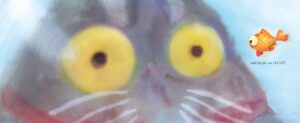 “The cat walked through the world, with its whiskers, ears, and paws . . .” In that walking it is seen. It is seen by a child, a dog, and a fox. It is seen by a fish, a mouse, and a bee. It is seen by a bird, a flea, a snake, a skunk, a worm, and a bat. And what’s important is that this “seeing” changes with every creature. For mice and dogs, the cat is perceived through the lens of their own interactions with it. For worms and bats the cat is only visible through the ways in which it moves through space (vibrations through the ground and the ways in which echolocation shape it). By the end we see a hodgepodge cat, a mix of how each animal sees it. Then the cat comes to the water, viewing its own reflection, “and imagine what it saw?”
“The cat walked through the world, with its whiskers, ears, and paws . . .” In that walking it is seen. It is seen by a child, a dog, and a fox. It is seen by a fish, a mouse, and a bee. It is seen by a bird, a flea, a snake, a skunk, a worm, and a bat. And what’s important is that this “seeing” changes with every creature. For mice and dogs, the cat is perceived through the lens of their own interactions with it. For worms and bats the cat is only visible through the ways in which it moves through space (vibrations through the ground and the ways in which echolocation shape it). By the end we see a hodgepodge cat, a mix of how each animal sees it. Then the cat comes to the water, viewing its own reflection, “and imagine what it saw?”
The book this actually reminded me of the most was that old Rudyard Kipling story “The Cat Who Walked By Himself”. Unlike that tale we never really get this book from the cat’s perspective. Indeed, the cat is often only visible when others see him. The similarity to Kipling comes with the language. That very first sentence, for example: “The cat walked through the world, with its whiskers, ears, and paws . . .” And as in the original art for that story, the cat here is often pictured from the back. There’s a lot of debate about whether or not a book written by one person and illustrated by another can ever be as strong as a book that is written and illustrated by the same artist. They All Saw a Cat makes a fairly strong argument that artist who are also authors are the better way to go. Wenzel’s sentences are so perfectly layered here. If anything, they match the personality of a cat. There aren’t many words, true. But the measured tone is at once soothing and scintillating. I liked how the book broke up the animals. The first three are potential predators. The second three are potential  prey. The final six are strict observers. It also ends perfectly with the best possible sentence. Not all picture books, no matter how beautiful they look, are capable of sticking their landings. This one does.
prey. The final six are strict observers. It also ends perfectly with the best possible sentence. Not all picture books, no matter how beautiful they look, are capable of sticking their landings. This one does.
In this book the publication page (where they tend to describe the artist’s process) gets a little slaphappy. It reads (and I am quoting this precisely), “The illustrations in this book were rendered in almost everything imaginable, including colored pencil, oil pastels, acrylic paint, watercolor, charcoal, Magic Marker, good old number 2 pencils, and even an iBook.” The other day I was listening to a podcast where one of the speakers speculated that including this kind of information in a book changes the adult reader’s perspective. Would I think less of this book if I found out it was done in digital ink? Possibly, though I should note that I was blown away by the art long before I ever turned to see how it was made. And while digital art is great and has its place, I’d like to see the program that replicates what Wenzel’s done here.
 The sheer beauty of the book is what strikes you first when you read it. Consider the two-page spread where on the left-hand side you see the cat through snake vision, and on the right-hand side you see the cat through skunk vision. The snake’s view is a vibrant shock of color, all yellows and reds and blues. The skunk’s in contrast, looks like the soft grainy sepia-tones of an old film. Maybe Casablanca. Put together, side-by-side, the same cat is its own opposite. But if Wenzel were constantly wowing you with eye-popping images that wouldn’t really support the narrative flow. That’s why the pacing of the book is key. Wenzel starts the book out very slowly, with lots of white backgrounds and views akin to what we see as people. The child, dog, and fox all see the cat similarly (though I loved the oversized bell around its neck, indicating the fox and dog’s superior sense of hearing through a visual medium). The fish is the first moment you start to separate from human visuals. The cat’s large, yellow eyes are 80% of the two pages. But it is the mouse’s Basquiat-esque view of the cat that steals the show. The red background, and the cat all teeth and claws, and terrifying eyes is a far cry from the cuddly creature at the start of the story. It’s also the moment when the child readers come to realize that perception is personal.
The sheer beauty of the book is what strikes you first when you read it. Consider the two-page spread where on the left-hand side you see the cat through snake vision, and on the right-hand side you see the cat through skunk vision. The snake’s view is a vibrant shock of color, all yellows and reds and blues. The skunk’s in contrast, looks like the soft grainy sepia-tones of an old film. Maybe Casablanca. Put together, side-by-side, the same cat is its own opposite. But if Wenzel were constantly wowing you with eye-popping images that wouldn’t really support the narrative flow. That’s why the pacing of the book is key. Wenzel starts the book out very slowly, with lots of white backgrounds and views akin to what we see as people. The child, dog, and fox all see the cat similarly (though I loved the oversized bell around its neck, indicating the fox and dog’s superior sense of hearing through a visual medium). The fish is the first moment you start to separate from human visuals. The cat’s large, yellow eyes are 80% of the two pages. But it is the mouse’s Basquiat-esque view of the cat that steals the show. The red background, and the cat all teeth and claws, and terrifying eyes is a far cry from the cuddly creature at the start of the story. It’s also the moment when the child readers come to realize that perception is personal.
An interesting criticism of this book is linked precisely to the more science-y aspects of the text. One of the commenters on a blog post I wrote, that included this book, said that, “I desperately wanted some nice science-y back matter to tell us how and why different animals see the cat the way they do. Sure, we can go OH, this animal must be colorblind! This animal ‘sees’ by sonar! But c’mon, throw us an edu-bone here. It felt like such a missed opportunity.” This is an interesting note. We’ve grown used to useful backmatter in this post-Core Curriculum world of ours. Would this book have been stronger if it had contained a science element to it? Yes and no. It would have been a real boon to teachers, you betcha, and probably to perceptive parents who could have turned it into a lesson for young readers. If I had to guess I’d say the reason it wasn’t done may have had something to do with the fact that Wenzel is mixing his fact and fiction here pretty closely. Each animal is “seeing” as it would in the wild, but that is not to say that the art is by any means scientific. The cartoonish quality to the animals (no better exemplified than in the mouse’s bulbous eyes) doesn’t hold up to close scrutiny. I would have very much liked notes on the accuracy of the art, but I can understand the fear of asking the reader to take the work too seriously. I don’t necessarily agree, but I understand it.
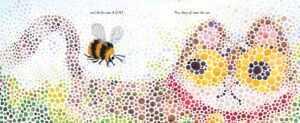 How do you discuss this book with kids? Well, you might read it to them, start to finish, and then ask them which picture shows what the cat really looks like. When they select (some will go with the human view but I’ve no doubt a couple will prefer the dog or bird p.o.v.s) you then tell them that actually all the pictures in this book are true. And if you really want to blow their little minds, you tell them that there’s a good chance that the way you see the world isn’t the same way the person next to you does. Everyone, everywhere sees the world different from his or her neighbor. Is it any wonder we have problems? The solution is to try and see things from another person’s view. Now, if the kids think you’re speaking literally or figuratively, it doesn’t really matter. You’ve planted the seed. Or, rather, the book has.
How do you discuss this book with kids? Well, you might read it to them, start to finish, and then ask them which picture shows what the cat really looks like. When they select (some will go with the human view but I’ve no doubt a couple will prefer the dog or bird p.o.v.s) you then tell them that actually all the pictures in this book are true. And if you really want to blow their little minds, you tell them that there’s a good chance that the way you see the world isn’t the same way the person next to you does. Everyone, everywhere sees the world different from his or her neighbor. Is it any wonder we have problems? The solution is to try and see things from another person’s view. Now, if the kids think you’re speaking literally or figuratively, it doesn’t really matter. You’ve planted the seed. Or, rather, the book has.
Let us do away with the notion of “cat people” vs. “dog people”. This book is for “people”. End of sentence. And if I got a little crazy in my first paragraph here, filling you in on my view of world peace via picture books, you’ll understand when you read this book. That tired old phrase to “walk a mile in someone else’s shoes” makes no sense to a kid. But travel a page through another animal’s eyes? There’s never been a better fictional picture book that allows you to do this. If we all see something as simple as a cat this differently, what else might we not see the same? It’s a treat to eye, ear, and mind, but don’t forget. We’re all going to see this book through our own lenses. What will your kids see when they look at it? Only one way to find out.
On shelves now.
Source: Galley sent from publisher for review.
Like This? Then Try:
Professional Reviews:
Other Mentions:
Videos:

Mmmm. It’s that time again. The summer is beginning to cool its jets and with fall on the horizon I need to present the third in my yearly four-part prediction series. What was that fantastic quote Travis Jonker came up with the other day? Ah, yes.
“Those who have knowledge, don’t predict. Those who predict, don’t have knowledge.” – Lao Tzu
And like Travis, we’re just going to run roughshod over that one. As ever, I will remind you that my ability to predict these things is a bit on the shoddy side. You might be better off reading the Mock Newbery and Mock Caldecott lists of Goodreads. That said, I can give you something those lists can’t: Scintillating commentary!! Unless you’re reading Heavy Medal or Calling Caldecott (both of which have just started up again). Then you’ll get commentary from a variety of different voices. Anyway . . .
Let’s do this thing.
2017 Caldecott Predictions
Ideas Are All Around by Philip Stead
 I think I’m going to stick with this one. Here’s what usually happens when I mention this book on a prediction list. I say I don’t find it very kid-friendly and then someone responds that they know several kids who love it. They just happen to be older kids. One forgets that not all picture books are aimed at three-year-olds. Stead’s book pushes the boundaries. It may, in fact, be one of those very rare picture books written for a middle grade audience. With that in mind, a consideration of the text and image together takes on a different light entirely.
I think I’m going to stick with this one. Here’s what usually happens when I mention this book on a prediction list. I say I don’t find it very kid-friendly and then someone responds that they know several kids who love it. They just happen to be older kids. One forgets that not all picture books are aimed at three-year-olds. Stead’s book pushes the boundaries. It may, in fact, be one of those very rare picture books written for a middle grade audience. With that in mind, a consideration of the text and image together takes on a different light entirely.
Jazz Day: The Making of a Famous Photograph by Roxane Orgill, ill. Francis Vallejo

Not fish, nor fowl. Is it nonfiction, narrative nonfiction, poetry, or a picture book? The Boston Globe-Horn Book Awards placed it squarely in the picture book category (those judges must have been awfully smart, don’t you think, huh huh, don’t you think, huh?) though like Ideas Are All Around it’s for older readers. A bit of a trend here, eh? Maybe. After all, the last few nonfiction Caldecott winners (Finding Winnie, Locomotive, etc.) were on the older side as well.
Miracle Man by John Hendrix
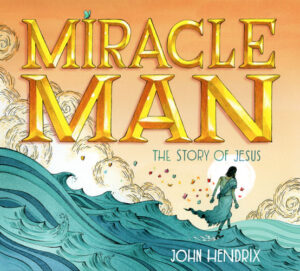
Chant it with me! Jesus, Jesus, Jesus, Jesus! Now last time I did a prediction edition I mentioned the whole question about whether or not a Jesus book could win a Caldecott anymore (since, y’know, the first 1938 winner was Animals of the Bible). Now I’ve found out that I’ll get to talk with The Horn Book Podcast soon about religion and children’s literature in the 21st century. That should help me straighten out my thoughts on the matter. In the meantime, I’m keeping this one in the mix. As I mentioned before, it’s the wildest of my Wild Cards, but I think it may have an outside chance.
Radiant Child: The Story of Young Artist Jean-Michel Basquiat by Javaka Steptoe
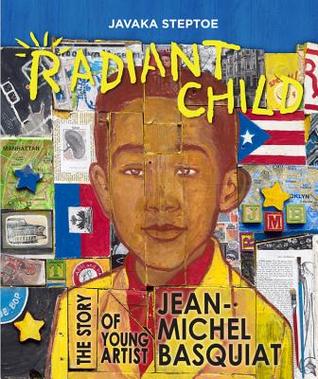
Speaking of the Horn Book Podcast, there was an interesting discussion the other day with Jules Danielson of the 7-Imp blog about whether or not publishers should include information about how the art was made on the publication page of a picture book. Roger Sutton was asking if knowledge of how a book is made adjusts your interpretation of the art. I mentioned this to a friend and they pointed out that in 2016 we’re seeing a crazy amount of eclectic and interesting art in our contenders. From the found wood of Yuyi Morales’s Rudas: Niño’s Horrendous Hermanitas to the Moroccan influence and mixed media of Evan Turk’s The Storyteller (we’ll get to that) to the found wood (again) of this book, it has never been a better time to get creative with your medium. And anyway, this book just blew me away. Technically a bio won the Caldecott last year, but there’s no rule saying it can’t happen repeatedly. And how awesome would it be for a Steptoe to win the Caldecott again? Javaka completely deserves it with this book.
Snow White: A Graphic Novel by Matt Phelan

Okay! So graphic novels have been winning Newberys left, right, and center lately, right? Which is to say, Newbery Honors. On the Caldecott side, This One Summer, illustrated by Jillian Tamaki, written by Mariko Tamaki essentially blew our minds when it won a Caldecott Honor two years ago (and it was YA!). This 1930s reinterpretation of the Snow White story is far younger than Tamaki’s book, and done in an elegant black and white style. It is, in its own way, very sexy but still child appropriate (I’ll have to review it sometime to figure out how that’s even possible). Phelan’s never won any Caldecotts that I can tell, but he’s also become more and more accomplished as the years have gone by. This book would be a risk for the committee, but it would also be a wonderful way of praising Phelan’s evident expertise.
The Storyteller by Evan Turk
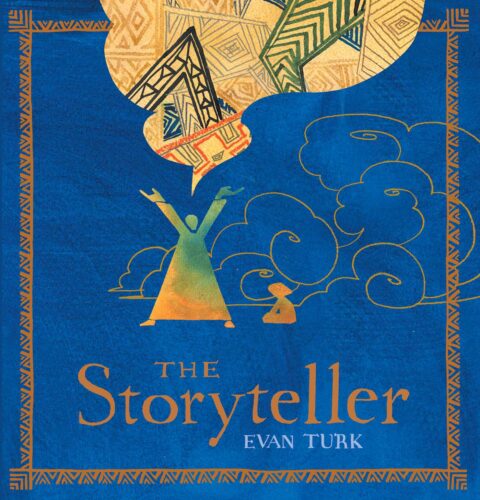
Sometimes a Caldecott winner says something about the times in which we live. Turk’s book talks about the roles stories have in our lives. It folds a story within a story within a story and then backs out again without tripping up once. Visually it’s a stunner, with smart writing to match, but more importantly it’s speaking to the times in which we live. We are desperate for stories these days. This book speaks not just to that need but the solution. Aw, heck. It may even have a chance at a Newbery. Look at the art when you get a chance, though. It’s truly beautiful.
Thunder Boy Jr. by Sherman Alexie, ill. Yuyi Morales
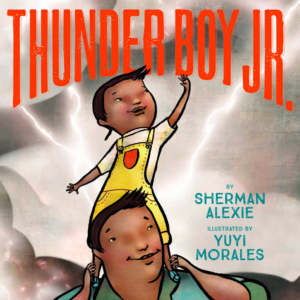
This book was already mentioned on Heavy Medal’s Ten Picture Books That Can Win the 2017 Newbery Medal. On the Caldecott side of the equation it’s already received a Boston Globe-Horn Book Honor. It’s one of those books where the art slowly grabs you. There are circles within circles, connections upon connections. A long discussion of the book yields treasures. You will see things you missed many times before.
They All Saw a Cat by Brendan Wenzel

Someone told me recently that this book is scientifically accurate. If you’re unfamiliar with it, the premise is that a single cat is viewed in a multitude of different ways by different animals. I haven’t looked into the veracity of this claim yet, but if true then it’s just another feather in the cap of a remarkable title. Word on the street says that Chronicle paid a pretty penny for the manuscript. From everything I can see, it was worth it in the end.
2017 Newbery Predictions
Cloud and Wallfish by Anne Nesbet
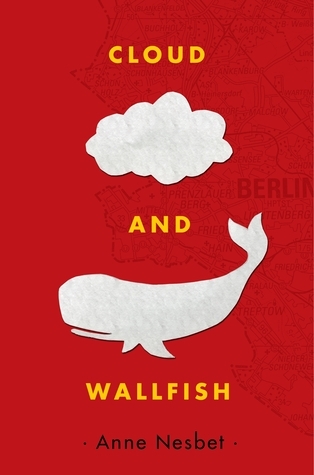
You know, you guys should really listen to that Horn Book Podcast sometime. It was Roger Sutton who mentioned this book and piqued my interest in it. I already had a copy at home since it came with rather peculiar swag. With the book came two little cut out stencils. One of a cloud. One of a whale. Aside from pitying the poor intern that spent at least a day cutting these out, it did interest me. Good cover. Good title. And Nesbet? That was the author behind that Cabinet of Earths series, right? Well I’ve been reading it and on some level it reminded me of The War That Saved My Life. Not the setting so much as just the pure enjoyment I’ve received while reading it. Roger said something similar himself. Nesbet has taken 1989 East Germany and just riddled it with interesting details and great writing. Y’all have to check this out.
Freedom Over Me: Eleven Slaves, Their Lives and Dreams Brought to Life by Ashley Bryan
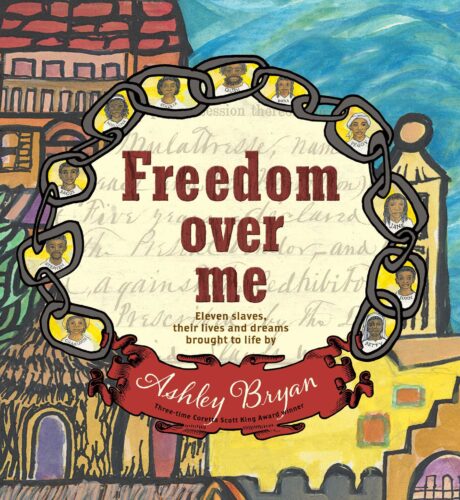
It’s been (checks calendar) six days since this book was released. Have you read it yet? Have you, have you? Because I’d really like to talk to somebody about it. I think 2016 is going to be The Year of Difficult Writing for me. So many authors are taking risks, doing things no one’s done before, and creating art in the process. Mr. Bryan is no exception. I’ve never seen anything quite like what he’s done here. Naming this book as even an honor would be a powerful statement.
The Inquisitor’s Tale: Or, the Three Magical Children and Their Holy Dog by Adam Gidwitz
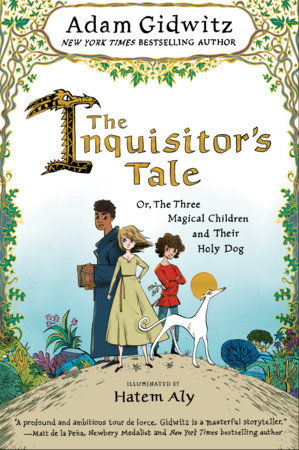
I actually did a double take when I reread my Summer Prediction Edition and found, to my shock and horror, that I had not included this book on the list. I must have read it right after I posted. In fact, I know I did since three or four readers named it as a top pick. Whole lotta religion in this one. And blood and guts too (this is Mr. Gidwitz we’re talking about) but talk about risks! He’s basically taking Christianity and Judaism and discussing them in a context almost never seen in middle grade historical fiction (fantasy? fiction?). Gutsy. Blood and gutsy.
Pax by Sara Pennypacker
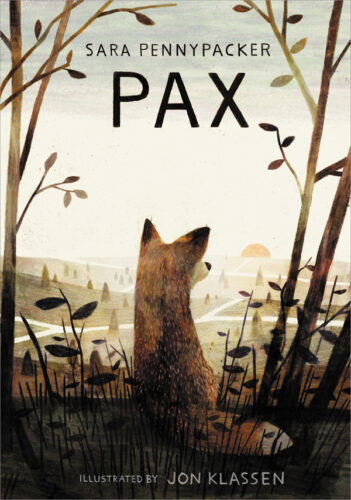
Ah, Pax. Let out of the gate early in 2016 with a huge marketing push to match. It worked in terms of sales, of course. This book has already become a New York Times bestseller (no mean feat for a book that isn’t part of a series written by a man whose name rhymes with My Own Pen). It was the earliest book to garner Newbery buzz as well. Indeed, there’s a reason Heavy Medal chose it as one of the first books of the year to discuss. Love it or hate it, there is a LOT to chew on in this novel. It could either sweep the awards or not even get an Honor nod. Though, if I were a betting woman, I’d say it’s a clear cut Newbery Honor book.
Presenting Buffalo Bill: The Man Who Invented the Wild West by Candace Fleming
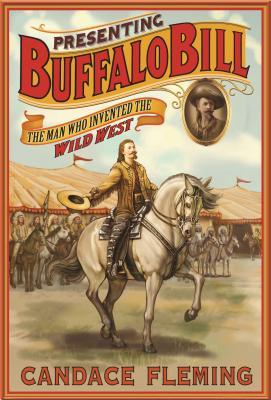
The Newbery is not awarded for difficulty. If it were, Fleming would be a shoo-in. Instead, she’s written a middle grade nonfiction biography of a figure forgotten by most kids today. A biography hasn’t won a Newbery since 1988 (Lincoln, a Photobiography, in case you’re curious). So the chances of Fleming winning for this book are slim, but I’m a fan of the underdog. The writing is extraordinary, the topic impossible, and the take clever. We’ll see if the committee agrees.
Raymie Nightingale by Kate DiCamillo

Like Pax, this is one of those shoo-ins for discussion. Also like Pax it came out early in the year. Will the committee be burned out by the time they actually get around to discussing it? Considering how much there is to discuss about the book, not likely. If it wins the Award proper that will be DiCamillo’s third Newbery Award (not counting Honors). Something to chew on.
When Green Becomes Tomatoes by Julie Fogliano

Mmm. Poetry. Slightly less rare than middle grade biography winners. After all, verse novels have won. Monologues done in rhyme have won. Even straight up books of poetry have, technically, won. One thing I have learned about this book is that not everybody shares my love of it. Like humor, the worth of poetry can prove subjective. Still and all, there’s a groundswell of support for it out there. One of the loveliest books of the year, by far.
Wolf Hollow by Lauren Wolk
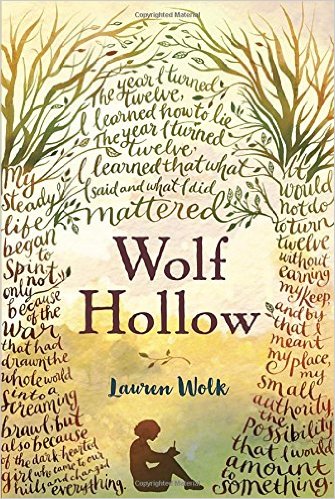
Also known as the book I had to flip to the back of because it became too tense for me not to know how it ended. They keep comparing it to To Kill a Mockingbird in the ad copy, which I feel is a bit unfair. Any book compared to Harper Lee’s classic is going to end up with a raw deal. It’s an interesting take on prejudices and has, by far, the most evil bully in a book I have EVER read. I wouldn’t call it enjoyable in the same way as the Nesbet book, but it was deeply compelling and beautifully written.
AND NOW . . . THE BOOK THAT IS GOING TO BE SUPER FUN FOR THE NEWBERY COMMITTEE AS THEY TRY TO FIGURE OUT IF IT’S EVEN UP FOR CONTENTION OR NOT . . .
Are You an Echo? The Lost Poetry of Misuzu Kaneko, narrative and translation by David Jacobson, Sally Ito & Michiko Tsuboi

Haven’t heard of it? I bet not. I have not yet begun to sing its praises on this blog, having just read it, but this is without a doubt one of the most amazing books of the year.
Now this should be an open and shut case of a book that simply can’t be a Newbery contender. See how I mentioned that there was a translator or two involved in this book? Right. Books eligible for the Newbery must have originally been published in the United States. Case closed, right? Maybe not. This book is about the life of a celebrated Japanese poet for children who was rediscovered not long ago, and became famous thanks in large part to one of her poems circulating after the tsunami of 2011. It pulls no punches and reproduces original translations of her poems throughout the text.
So the book itself was originally published in the States, right? But the poetry spotted throughout the book comes from a Japanese anthology of Kaneko’s works. What this means is that even if the poetry has never been translated in this way before, technically the poems have been translated overseas before and therefore the book is not a Newbery contender. I think. If true this is a pity since I truly believe that anyone who reads this book will be utterly blown away by what they find inside. In any case, the author of the poetry is dead and I believe that may be an impediment to its Newbery qualifications as well. Ah well. Check it out when you get a chance. It’s really quite remarkable.
Okay, folks! Lemme have it! What did I miss?

Fickle little me. Titles appear. Titles disappear. Many of the books I placed on my Spring 2017 predictions list are gone by June, and what has changed? Aren’t the books as wonderful now as they were when I originally propped them up? Of course they are, but I’ve done enough book discussions in the intervening months that I feel as if I’ve a better grasp on what’s a contender. Not that my track record is by any means perfect. These are, as ever, just my professional opinion. And I may have gone a little crazy with the Caldecott predictions this time around . . .
Be sure to check out the 100 Scope Notes post on books that Goodreads readers think have a real shot too.
2017 Caldecott Predictions
Thunder Boy Jr. by Sherman Alexie, ill. Yuyi Morales
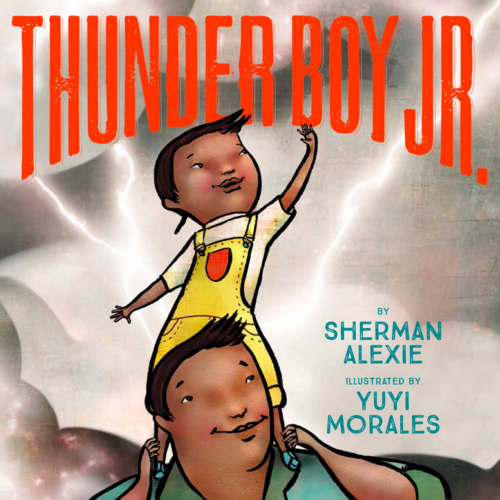
I read this one a long time ago and liked it just fine. Personally, it wasn’t hitting me in the same way as Yuyi’s previous two books had, but I certainly enjoyed the spirit and energy and sheer love coming off the pages. Then I talked about it with a bunch of other librarians and when we sat down and looked at those images, one after another, and discussed how one leads to another and how well Yuyi is able to convey familial affection with just the simplest of movements . . . well, I’m sold. In fact, I may have just been convinced that this is her best book yet.
Du Iz Tak? by Carson Ellis
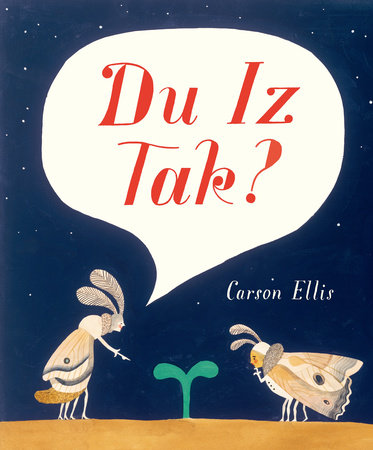
Unlike many of my honored colleagues, I’m pretty darn neutral on Ellis. As a person she’s sweet as peaches on the vine but her art has never left me feeling warm and snuggly. Now those of you who know me know that I’ve a weakness for weirdness. Dark horse medal contenders are my favorites. All the more reason that I should incline towards this strange, silly, downright odd little tale of bugs speaking their own (very comprehensible) language and the flower that inspires them. I’ve read this book many times to my own kids and I can honestly say that it’s a perfect combination of luscious, lovely, occasionally terrifying art and kid-friendly storylines.
This House Once by Deborah Freedman
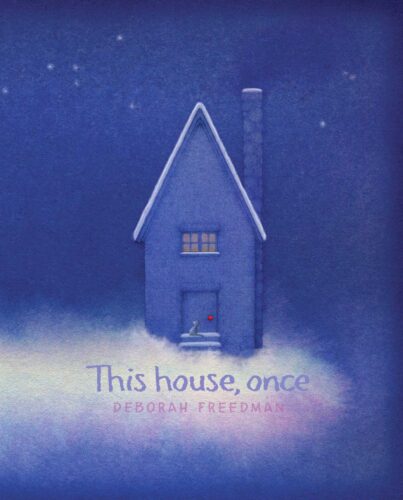
Dude, I was into Freedman when Scribble came out. When I saw that book I remember thinking to myself, “This lady’s got something to her. By gum, she’s going places!” And yes. I do actually use phrases like “by gum” in my head. I’ve also been known to substitute it for “golly”, “gee willikers”, and “well slap my face and call me Bertha.” But I digress. I’m still parsing my thoughts on this book, which is both like every Freedman book you’ve ever seen and is vastly different from them all. Worth thinking about.
Miracle Man by John Hendrix
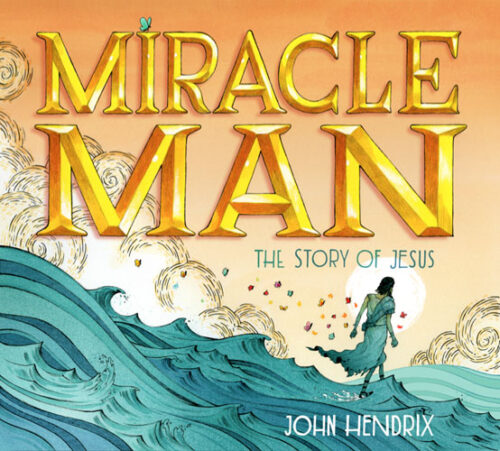
I mean, I put it to you. Can a Jesus book win a Caldecott in the 21st century? Considering that the 1938 Medal Winner, which is to say the very first Caldecott ever given out, went to Animals of the Bible, A Picture Book, I’d say there was a precedent. This is another wild card, and I don’t envy the Caldecott committee this discussion. It’s hard to not to be in awe of Hendrix’s typography alone.
Before Morning by Joyce Sidman, ill. Beth Krommes

Do you do that thing I do where if a person has won a Newbery or Caldecott Medal (not Honor) before then you sort of give them second billing when thinking about future award winners? I do that all the time, but when you see a book as gorgeous as this one you put all that aside. In this hot June month, something as lovely, cool, and refreshing as this snowbound wonder book is of infinite relief. Krommes outdoes herself here, and the emotional beats of the book thump strong. Is that a phrase? I’m keeping it in.
The Uncorker of Ocean Bottles by Michelle Cuevas, ill. Erin E. Stead

Mmm. Deceptively simple, this one. Like Krommes, Stead already has a nice and shiny Caldecott Medal under her belt. I had the pleasure of hearing Cuevas and Stead discussing this book during Day of Dialog at Book Expo this year. Here’s a fun game: Read the text without looking at the pictures. You might get an entirely different view of the proceedings. Stead’s mark is so strong and her images so beautiful that it may contribute heavily to the book’s potential win. We shall see.
Ideas Are All Around by Philip Stead
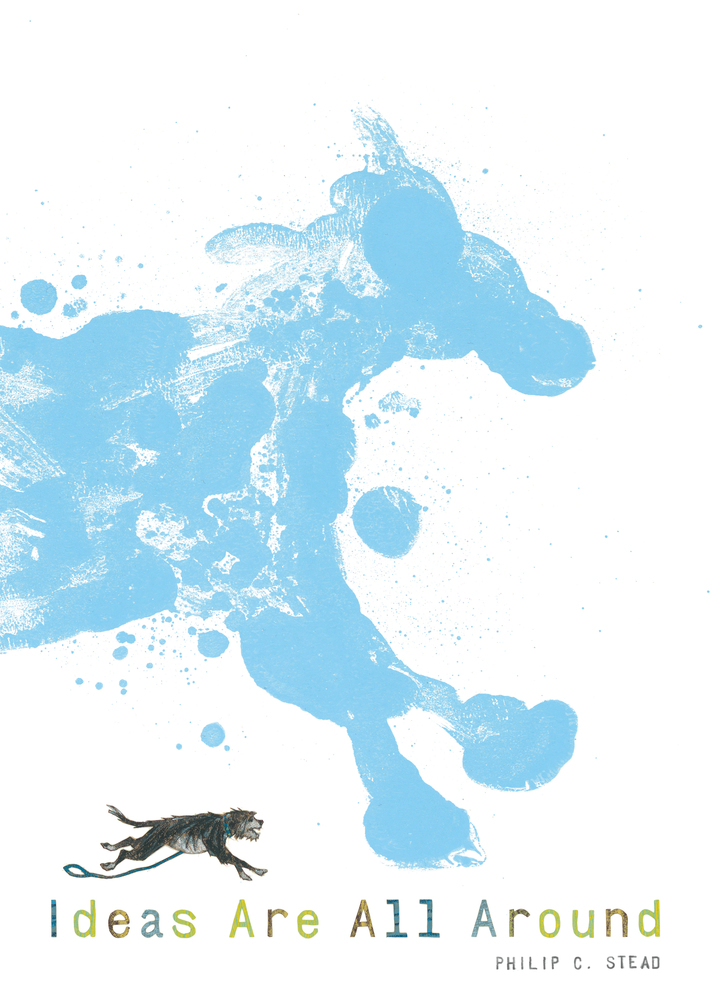
Mind you, he has another book out this year (Samson in the Snow) and it wouldn’t surprise me even a hundredth of a jot if he won the Caldecott for that instead. This is Mr. Stead’s hoity-er toity-er offering. Beautiful, no question. But a touch on the esoteric side.
Radiant Child: The Story of Young Artist Jean-Michel Basquiat by Javaka Steptoe

I have been waiting for this book for approximately five years. Little, Brown & Co. is sick to death of me asking, “This year? How ’bout this year? Is it coming out this year?” To see the art in person floors you. Steptoe painted entirely on found wood and the storytelling of Basquiat himself is sublime. This is one of my top picks, no question at all. You are in for such a treat when you read it!!!
The Storyteller by Evan Turk

GAH!! So good! So very very very very good. I’m not going to railroad you with reasons. Just read my review if you’re curious.
Jazz Day: The Making of a Famous Photograph by Roxane Orgill, ill. Francis Vallejo
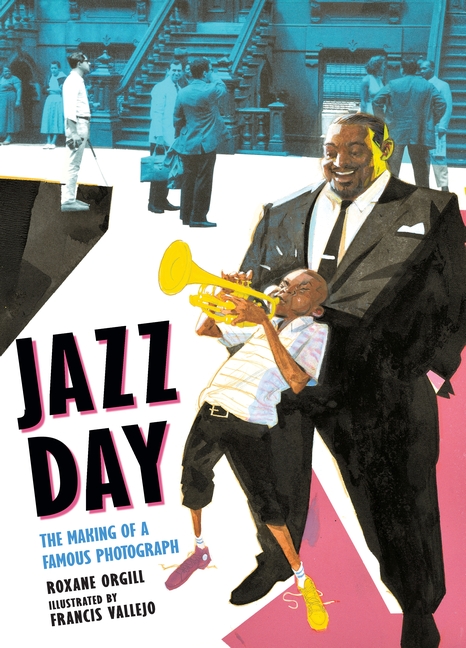
Winner of the Boston Globe-Horn Book Award for Picture Books, as awarded by a clearly BRILLIANT committee *cough cough*. Vallejo is a first timer here, but you’d never know it from the art. As I’ve mentioned before, the book doesn’t slot into any categories very easily. Hopefully the committee will recognize the art for what it is – extraordinary and distinguished.
They All Saw a Cat by Brendan Wenzel

And, the winner. Done. Nothing more to see here, folks.
I’m sorry . . . you’ve not seen this one? Oh. Well, it’s quite simple. Wenzel has created the Caldecott winner for 2017. Don’t know what’s confusing about that. You’ll understand when you see it for yourself. I don’t want to call it self-explanatory. Let’s just say, it’s a bit of a given.
Freedom in Congo Square by Carol Boston Weatherford, ill. R. Gregory Christie
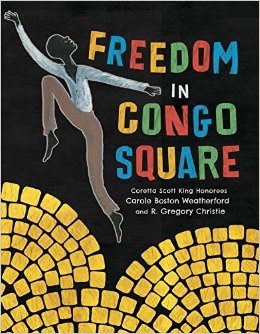
Like Yuyi’s book, it took me a little while to come around to this one. Christie’s art changes subtly from book to book. Here, he appears to be channeling the ghost of Jacob Lawrence. That’s a good thing. An amazing solution to rendering slavery and its horrors accurately but still in a way that’s friendly to kids on the younger end of the education scale. After you read this one, you just gotta dance.
2017 Newbery Predictions
My Newbery reads continue to lag vs. my Caldecott reads (picture books are just easier to read quickly!). Fortunately, I’ve been lucky in what’s crossed my plate. If the jury would be so good as to consider . . .
The Wild Robot by Peter Brown
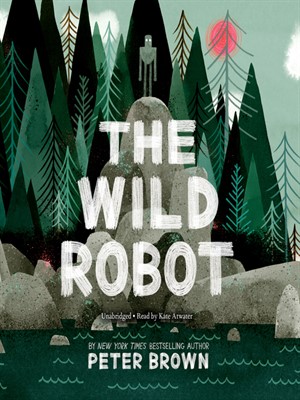
A long shot, no question. Its potential relies entirely on the kinds of readers you’ll find on the Newbery committee this year. This book requires one to stretch their incredulity from time to time. If you can do so, the rewards are vast. Such a good bedtime book. It would be a joy to see this make the list.
Freedom Over Me: Eleven Slaves, Their Lives and Dreams Brought to Life by Ashley Bryan

I call this one Simon & Schuster’s Secret Weapon. But don’t take my word for it. Read this brief plot description for yourself: “Using original slave auction and plantation estate documents, Ashley Bryan offers a moving and powerful picture book that contrasts the monetary value of a slave with the priceless value of life experiences and dreams that a slave owner could never take away.” Only it’s even better than that. Bryan is doing something completely new here and the writing is perfect. Don’t count this one out. I think it has some real legs.
Raymie Nightingale by Kate DiCamillo

It’s good. Deeply sad (a theme in 2016) but an honest-to-goodness page turner. I reviewed it here but I’m still parsing it in my mind. There is a LOT to chew on in these scant little pages.
When Green Becomes Tomatoes by Julie Fogliano

Poor poetry. I’ll be your friend. This is a book where the poems start off sounding pretty rote (this is hardly the first poetry-for-every-season-of-the-year book in the world) but then you get sucked into Fogliano’s writing. I like the art just fine, but the text is the true star of the show. You may read my review here if you’re curious.
Full of Beans by Jennifer L. Holm
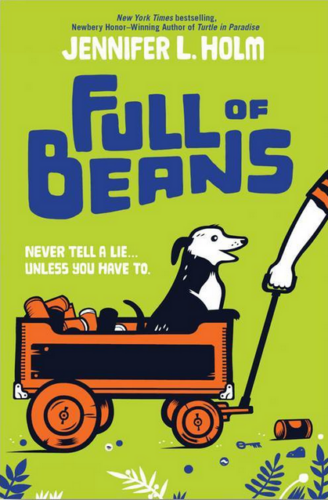
Here’s a fun quiz question for you: Has a prequel to a Newbery Honor ever won a Newbery itself? If this book continues Holm’s winning streak we may get our answer. Mind you, Holm has never won herself a Newbery Award proper. This wouldn’t be a bad book to do so. Just saying.
Pax by Sara Pennypacker
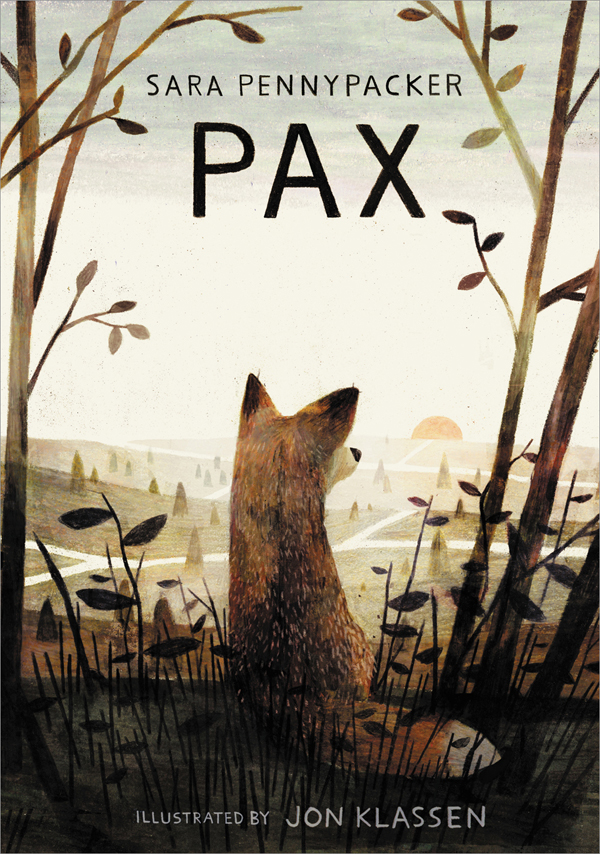
We had our Pax push and even a Pax backlash, so at this point I think we’re ahead of the game. Clearly this book has legs and a LOT of people discussing it. I think it continues to be one of the strongest contenders. A book that could only be tossed out on a technicality.
Samurai Rising: The Epic Life of Minamoto Yoshitsune by Pamela Turner, ill. Gareth Hinds
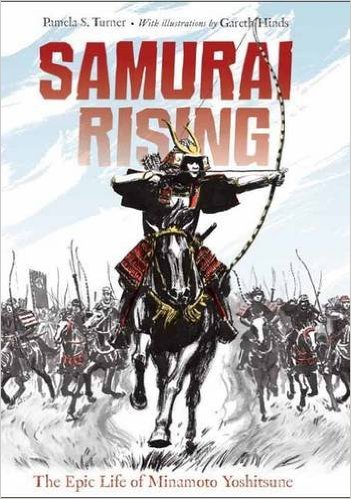
YES! What’s that line from The Princess Bride? “Fencing, fighting, torture, revenge, giants, monsters, chases, escapes, true love, miracles…” Not so many giants and monsters in this and the true love . . . well, you could make a case for it. Otherwise, I think we’re pretty close. Bloody but upbeat, that’s for sure. You can read my review of it here.
Wolf’s Hollow by Lauren Wolk

Originally written as an adult novel, this book was turned into one for kids with very little touches and tweaks. It’s not an easy read, but it’s a very strong one. I could see it going head to head with all the other major contenders. Better go out and read it when you get a chance. My review is here.
And that’s all she copiously wrote! What have I missed? Spill it. I know there’s a gap in there somewhere a mile wide.

What? Who? Now? Yes, if you’re checking the calendar you’ll see that three whole months of 2016 have gone by and you know what that means. Prediction time!
But Betsy, you say, that is quite simply the kookiest thing I’ve ever heard. It’s March, for crying out loud. We’ve ten months until the next award announcement. And all this is true. And it is loopy to the extreme that I’m doing this. Particularly when you consider my track record. To date:
2008 spring predictions: I get one Caldecott right (How I Learned Geography)
2009 spring predictions: I get two Newberys right (The Evolution of Calpurnia Tate and The (Mostly) True Adventures of Homer P Figg)
2010 spring predictions: I get one Newbery right (One Crazy Summer)
2011 spring predictions: I get one Newbery right (Inside Out and Back Again)
2012 spring predictions: I get two Newberys right (The One and Only Ivan and Splendors and Glooms), and one Caldecott right (Green).
2013 spring predictions: I get two Newberys right (Doll Bones and One Came Home) and one Caldecott right (Mr. Wuffles). But pride goeth before the fall.
2014 spring predictions: Zip. Zero. Zilch.
2015 spring predictions: I get two Newberys right (Echo and The War That Saved My Life)
The thing is, if I’d gotten Zip. Zero. Zilch. this time last year I might have given up the fun prediction game altogether. But this isn’t really about accurate predictions, is it? I mean, check out last year’s first listed Caldecott contender. WHOOPSIE! No, it’s about pinpointing the books that everyone should be talking about because they’re such great titles.
Now due to a new job where I’m not commuting to work every day (the hour train ride has turned into a sweet 20 minute walk) combined with my participation on the Boston Globe-Horn Book Award committee for 2016, I am not reading as many middle grade novels as I usually would. I have made up for that by reading every picture book I get sent. So you may see that I’ve a better grasp on Caldecott than Newbery this year. Case in point:
2017 Caldecott Predictions
Maybe Something Beautiful: How Art Transformed a Neighborhood by F. Isabel Campoy & Theresa Howell, ill. Rafael Lopez

See this here in my hand here? This sign that says, “Rafael Lopez for Caldecott”? I’m carrying it because sometimes it feels like every year I tout him as a real Caldecott contender (Drum Dream Girl had in in the bag, man!) and every year he slips through my fingers. Well not this year. This book (based on something he actually went out and did) is beautiful, socially conscious, and a title that kids actually enjoy reading multiple times. I feel it this time! It’s his year!
There Is a Tribe of Kids by Lane Smith
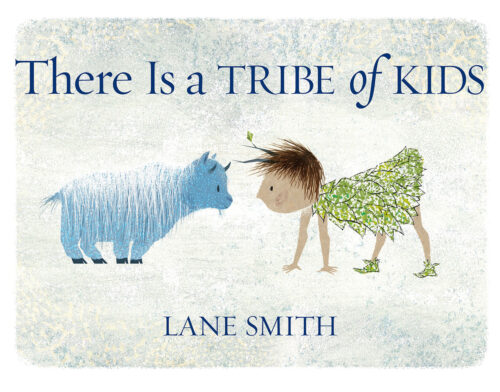
Smith hasn’t won a Caldecott since his Honor for Grandpa Green, but you could argue that this was because he wasn’t really putting his back into it. This book (in 2016 alone there are four different books on collective nouns, did you know?) takes an esoteric idea and weaves it into a story about finding your tribe, both literally and figuratively. This is a softer Smith than we usually see, and it may yield great dividends in the future.
Ideas Are All Around by Philip Stead

If any book could do a little tap dance while singing the words, “Cal-de-cott, Cal-de-cott, nothing could be finer“, it would be this one. It is also THE most esoteric picture book on this list. It will probably receive criticism for seemingly speaking more to adults than children, but the art really is distinguished. If anything this feels like a picture book from another country (I’m reminded of the works of Stian Hole in particular). I’ll be interested in following the conversation surrounding this one in the future.
Cricket Song by Anne Hunter
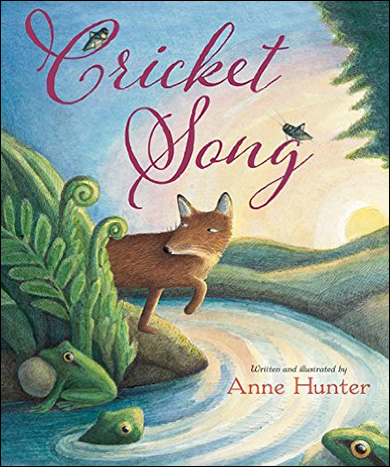
My wild card. There are probably a couple wild cards on this list, but this one is subtle. The author/illustrator splits the visual narrative into two distinct parts while pairing these images with a soothing text. It’s a bedtime book in the classic sense but a clever one. It also has a fox on the cover which, if you haven’t heard it before, is the unofficial animal of children’s books published in 2016.
The Storyteller by Evan Turk

I’ve already talked at great length about this one but I’d be more than happy to talk about it some more! Turk’s still new in this field. He is at the start of his career in children’s books, but the time and the care and the attention and the sheer beauty found in this book is jaw-dropping. Paired with a brilliant text to match, it has a lot to say about what the role of oral storytelling is in the electronic age. Big themes. Brilliant book.
Jazz Day: The Making of a Famous Photograph by Roxane Orgill, ill. Francis Vallejo

And speaking of brilliant books, meet Francis Vellejo. Debut illustrator, and hopefully the man is currently fending off job offers from all the major publishing houses. Vellejo brings to life a text that could have floundered in the hands of a less adept illustrator. Plus, as a woman who majored in college in Art with a concentration in Photography, any Caldecott contender that uses photography in some way has my instant and abiding love. Hopefully the use of photographs published in some other form prior to this book’s publication won’t disqualify it from contention.
One Day in the Eucalyptus Eucalyptus Tree by Daniel Bernstrom, ill. by Brendan Wenzel

Wenzel’s a fellow to watch in 2016. He has several books coming out this year and each one is clever. If I were to bet on just one I might look to this. Naturally if there were any justice then author Daniel Bernstrom would win something for the rhythmic text here. In lieu of that, Wenzel’s art is a fabulous complement to the twist on the Old Lady Who Swallowed a Fly motif. Besides, who doesn’t want to see vomiting snakes?
2017 Newbery Predictions
I shall direct you to the Heavy Medal 2017 Newbery Reading List, since what I have here today is fairly small in comparison. I’m only really going to mention the books that I am certain have a strong fighting chance this early in the game. These would be:
Raymie Nightingale by Kate DiCamillo

So I turn to a friend of mine the other day and I ask her to give it to me straight. “The latest Kate DiCamillo”, I say. “Is it . . . meaningful?” You see, I do very well with DiCamillo books when they involve pummeling carnies with errant baseballs, sweet talking toothless horses, or vacuuming up squirrels (to say nothing of giant donuts). I do far less well when her books make a grab at the old heartstrings. My friend assured me that while the book does not lack for heart, she was certain I would love it. And, since we’re talking DiCamillo here, there’s no one in the world who would argue that it’s not a serious contender in 2017.
Pax by Sara Pennypacker, ill. Jon Klassen

DiCamillo aside, if we had to talk about the book that is managing to get the most Newbery buzz the earliest in the year, Pax is where it’s at. I received a galley of Pax at the same time that I received a galley of The Nest by Kenneth Oppel last year. Both books were illustrated by Klassen and I couldn’t help but think that the man had exquisite taste in manuscripts. Since I had lobbied hard for Pennypacker to get some medal action years ago for her Summer of the Gypsy Moths, I feel this is an honor long since due.
Samurai Rising: The Epic Life of Minamoto Yoshitsune by Pamela Turner, ill. Gareth Hinds

So. Friggin’. Awesome. Weirdly appropriate for the Newbery too, age-wise. In spite of the fact that this is basically the Samurai version of Game of Thrones (something they mention in the ad copy for this book) the blood and guts aren’t visceral. Instead you get an amazing examination of the world’s most famous Samurai warrior. It’s nonfiction and Turner’s backmatter is nothing short of jaw-dropping.
There are some notable books that haven’t been mentioned here, but I want to hear from you. What’s blowing you away this year? What can’t you stop talking about?

 Snow White: A Graphic Novel
Snow White: A Graphic Novel Let’s get back to this notion I have that the idea of setting Snow White during the Depression in New York is original. It honestly goes above and beyond the era. I could swear I’d never read or seen a version where the seven dwarfs were seven street kids. Or where the evil stepmother was a star of the Ziegfeld Follies. Snow’s run from Mr. Hunt is through Central Park through various shantytowns and he presents the stepmother with a pig’s heart procured at a butcher. Even making her glass coffin a window at Macy’s, or the magic mirror an insidious ticker tape, feels original and perfectly in keeping with the setting. You begin to wonder how no one else has ever thought to do this before.
Let’s get back to this notion I have that the idea of setting Snow White during the Depression in New York is original. It honestly goes above and beyond the era. I could swear I’d never read or seen a version where the seven dwarfs were seven street kids. Or where the evil stepmother was a star of the Ziegfeld Follies. Snow’s run from Mr. Hunt is through Central Park through various shantytowns and he presents the stepmother with a pig’s heart procured at a butcher. Even making her glass coffin a window at Macy’s, or the magic mirror an insidious ticker tape, feels original and perfectly in keeping with the setting. You begin to wonder how no one else has ever thought to do this before. Lest we forget, the city itself is also a character. Having lived in NYC for eleven years, I’ve always been very touchy about how it’s portrayed in books for kids. When contemporary books are filled with alleyways it makes me mighty suspicious. Old timey fare gets a pass, though. Clever too of Phelan to set the book during the winter months. As Snow says at one point, “snow covers everything and makes the entire world beautiful . . . This city is beautiful, too. It has its own magic.” So we get Art Deco interiors, and snow covered city tops seen out of huge plate glass windows. We get theaters full of gilt and splendor and the poverty of Hoovervilles in the park, burning trashcans and all. It felt good. It felt right. It felt authentic. I could live there again.
Lest we forget, the city itself is also a character. Having lived in NYC for eleven years, I’ve always been very touchy about how it’s portrayed in books for kids. When contemporary books are filled with alleyways it makes me mighty suspicious. Old timey fare gets a pass, though. Clever too of Phelan to set the book during the winter months. As Snow says at one point, “snow covers everything and makes the entire world beautiful . . . This city is beautiful, too. It has its own magic.” So we get Art Deco interiors, and snow covered city tops seen out of huge plate glass windows. We get theaters full of gilt and splendor and the poverty of Hoovervilles in the park, burning trashcans and all. It felt good. It felt right. It felt authentic. I could live there again. The limited color palette, similar in many ways to The Storm in the Barn with how it uses color, here invokes the movies of the past. He always has a reason, that Matt Phelan. His judicious use of color is sparing and soaked with meaning. The drops of blood, often referred to in the original fairytale as having sprung from the queen’s finger when she pricked herself while sewing, is re-imagined as drops of bright red blood on a handkerchief and the pure white snow, a sure sign of influenza. Red can be lips or an apple or cheeks in the cold. Phelan draws scenes in blue or brown or black and white to indicate when you’re watching a memory or a different moment in time, and it’s very effective and easy to follow. And then there’s the last scene, done entirely in warm, gentle, full-color watercolors. It does the heart good to see.
The limited color palette, similar in many ways to The Storm in the Barn with how it uses color, here invokes the movies of the past. He always has a reason, that Matt Phelan. His judicious use of color is sparing and soaked with meaning. The drops of blood, often referred to in the original fairytale as having sprung from the queen’s finger when she pricked herself while sewing, is re-imagined as drops of bright red blood on a handkerchief and the pure white snow, a sure sign of influenza. Red can be lips or an apple or cheeks in the cold. Phelan draws scenes in blue or brown or black and white to indicate when you’re watching a memory or a different moment in time, and it’s very effective and easy to follow. And then there’s the last scene, done entirely in warm, gentle, full-color watercolors. It does the heart good to see.









































So glad you called this to my attention. It’s stunning. And I loved it that she didn’t just leave her 7 helpers behind in the end. Never liked that part of other versions. And I also loved the poetic justice of the evil stepmother’s end.
Here’s my predicament. At Annie Blooms Books we have it with the fairy tales–a logical spot, but I wonder if it would do better in young graphic novels or even MG fiction.
Graphic novels would be my thinking, though NYPL just released their 2016 books list and it was categorized under “Fairy Tales” so I might be alone in this. But surely it’ll get more use with the comics.
I just came across this online – I haven’t seen the actual book. Have you?
https://www.amazon.com/Snow-White-York-Fiona-French/dp/0192722107/ref=tmm_pap_swatch_0?_encoding=UTF8&qid=&sr=
Boy. Okay, yeah I did once. Back when I worked in the Donnell Central Children’s Room. But it wasn’t in very good condition and I don’t think I ever looked inside the front cover. Good find!